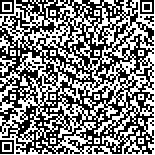| 本文已被:浏览 1985次 下载 1495次 |

码上扫一扫! |
|
|
| 南黄海冷水中心内外夏季大型底栖动物群落分析 |
|
张鹏弛1,2,3, 徐勇1,3, 李新正1,3, 王洪法1,3, 张宝琳1,3, 帅莲梅1, 安建梅2
|
|
1.中国科学院海洋研究所 海洋生物分类与系统演化实验室 青岛 266071;2.山西师范大学 生命科学学院 临汾 041000;3.青岛海洋科学与技术国家实验室 海洋生物学与生物技术功能实验室 青岛 266071
|
|
| 摘要: |
| 根据1959年、2004年和2012年夏季航次的调查数据,研究南黄海冷水中心内、外大型底栖动物群落结构及年际变化。使用Shannon-Wiener多样性指数、Pielou均匀度指数、Margalef丰富度指数,平均分类差异指数以及丰度生物量比较曲线(abundance-biomass comparison curves,ABC Curves)分析群落的组成与变化,使用相对重要性指数(index of relative importance,IRI)分析群落中的优势种和重要种。研究结果显示,3个航次共鉴定大型底栖动物112种,隶属18纲69科80属;其中冷水中心(Yellow Sea cold water mass core,YSCWMC)内33种,隶属16纲65科75属;冷水中心外87种,隶属7纲30科36属。两因素方差分析(Two-way ANOVA)结果显示三航次间时空尺度上冷水中心内、外的 H'、 J'和 d的差异均不显著,物种丰度和物种生物量也未发生明显的改变。冷水中心内部群落的 H'、 J'和 d变化幅度较冷水中心外部群落小,表明相较冷水中心外的群落,冷水中心内的群落结构较为稳定。分类差异变异指数及ABC曲线分析也显示冷水中心内、外的群落状况良好。通过比较冷水中心内、外物种组成发现冷水中心内软体动物(Mollusk)种类最多,其丰度和生物量在冷水中心内优势明显,且三个航次间软体动物物种改变较小。冷水中心内群落中的多毛类动物(Polychaeta)和棘皮动物(Echinodermata)虽在各年份分别占据优势种地位,但种类极少。冷水中心外群落中的多毛类动物和棘皮动物占据绝对优势,无论是种类数还是生物量都较其他种类高。在调查航次总生物量中,冷水中心内的软体动物生物量占总生物量的38%,而冷水中心外的仅占总生物量的3%,说明软体动物较为适宜生活在低温、高盐的冷水环境中。三年间分析调查显示冷水中心内软体动物的重要种及常见种有薄索足蛤(Thyasira tokunagai)、秀丽波纹蛤(Raetellops pulchella)、短吻蛤(Periploma sp.)、胡桃蛤(Nucula sp.)和日本梯形蛤(Portlandia japonica)。冷水中心对于大型底栖动物中软体动物的生长繁殖具有重要的保护作用,能够维持其群落结构的稳定。 |
| 关键词: 南黄海冷水中心 生物多样性 群落结构 软体动物 大型底栖动物 |
| DOI:10.11693/hyhz20160800180 |
| 分类号: |
| 基金项目:中科院科技先导专项(A),XDA11020303号;海洋公益性行业科研专项经费项目,201505004-1号;国家自然科学基金项目,41176133号。 |
附件 |
|
| COMPARISON IN MACROBENTHIC COMMUNITY COMPOSITION INSIDE AND OUTSIDE THE COLD WATER MASS IN THE SOUTHERN YELLOW SEA IN SUMMER |
|
ZHANG Peng-Chi1,2,3, XU Yong1,3, LI Xin-Zheng1,3, WANG Hong-Fa1,3, ZHANG Bao-Lin1,3, SHUAI Lian-Mei1, AN Jian-Mei2
|
|
1.Department of marine organism taxonomy & phylogeny, Institute of Oceanology, Chinese Academy of Science, Qingdao 266071, China;2.School of Life Science, Shanxi Normal University, Linfen 041000, China;3.Laboratory for Marine Biology and Biotechnology, Qingdao National Laboratory for Marine Science and Technology, Qingdao 266071, China
|
| Abstract: |
| To compare the macrobenthic community composition, community structure, and inter-annual variation inside/outside the Yellow Sea Cold Water Mass Core (YSCWMC) in summer, we analyzed the data collected in three marine surveys in July 1959, June 2004, and August 2012 in 18 stations. Three stations within and beyond the YSCWM were selected in each survey. Biodiversity indices including Shannon-Wiener index (H'), Pielou index (J'), Margalef index (d), and average taxonomic distinctness index (△+) were applied. Variation in taxonomic distinctness index (∧ +) and abundance-biomass comparison (ABC) curves were used to determine the status of the community. In the three surveys, altogether 33/87 species were found in/out of the cold-water mass. Two-way ANOVA analysis shows no significant differences in H', J', and d, as well as in abundance and biomass, in spatial and temporal realms in or out of the YSCWMC. The variation in community component was slightly greater in the inside than the outside, which is also true as shown in ABC curve. Mollusks were obviously more abundant inside than outside in biomass with very little change in species composition. Polychaeta and Echinodermata were major contributor to biomass but very few in variety inside the core, while in the outside, they dominated in both biomass and variety. Mollusks occupied 38% of the total biomass inside but only 3% outside. Thyasira tokunagai, Raetellops pulchella, Bivalvia, Nuculanida, and Portlandia japonica were main and common species inside the water mass. Therefore, YSCWMC could provide a favorable condition for mollusk growth and propagation, also maintain the its community structure. |
| Key words: Yellow Sea Cold Water Mass Core (YSCWMC) biodiversity community structure mollusks macrobenthos |
